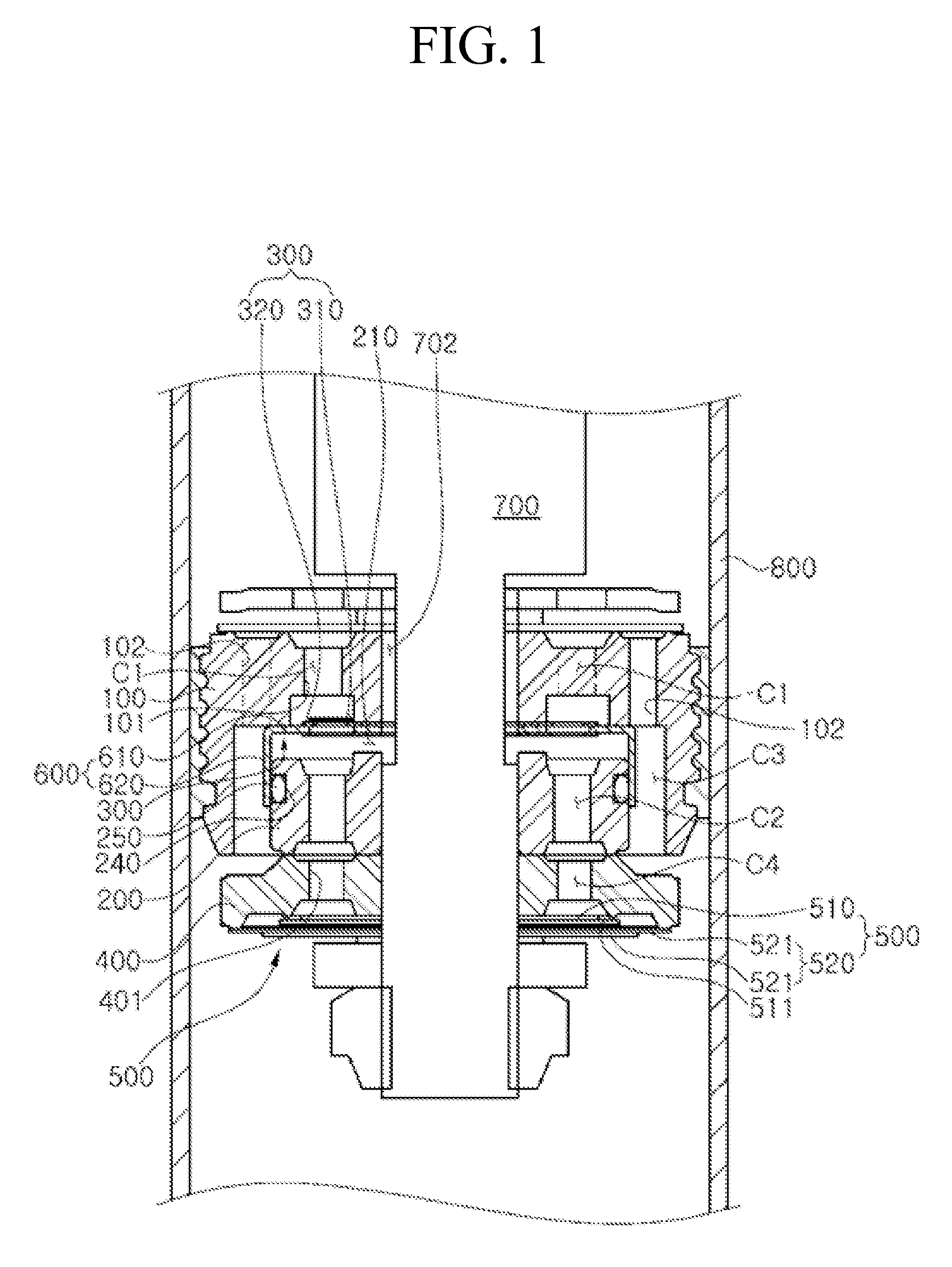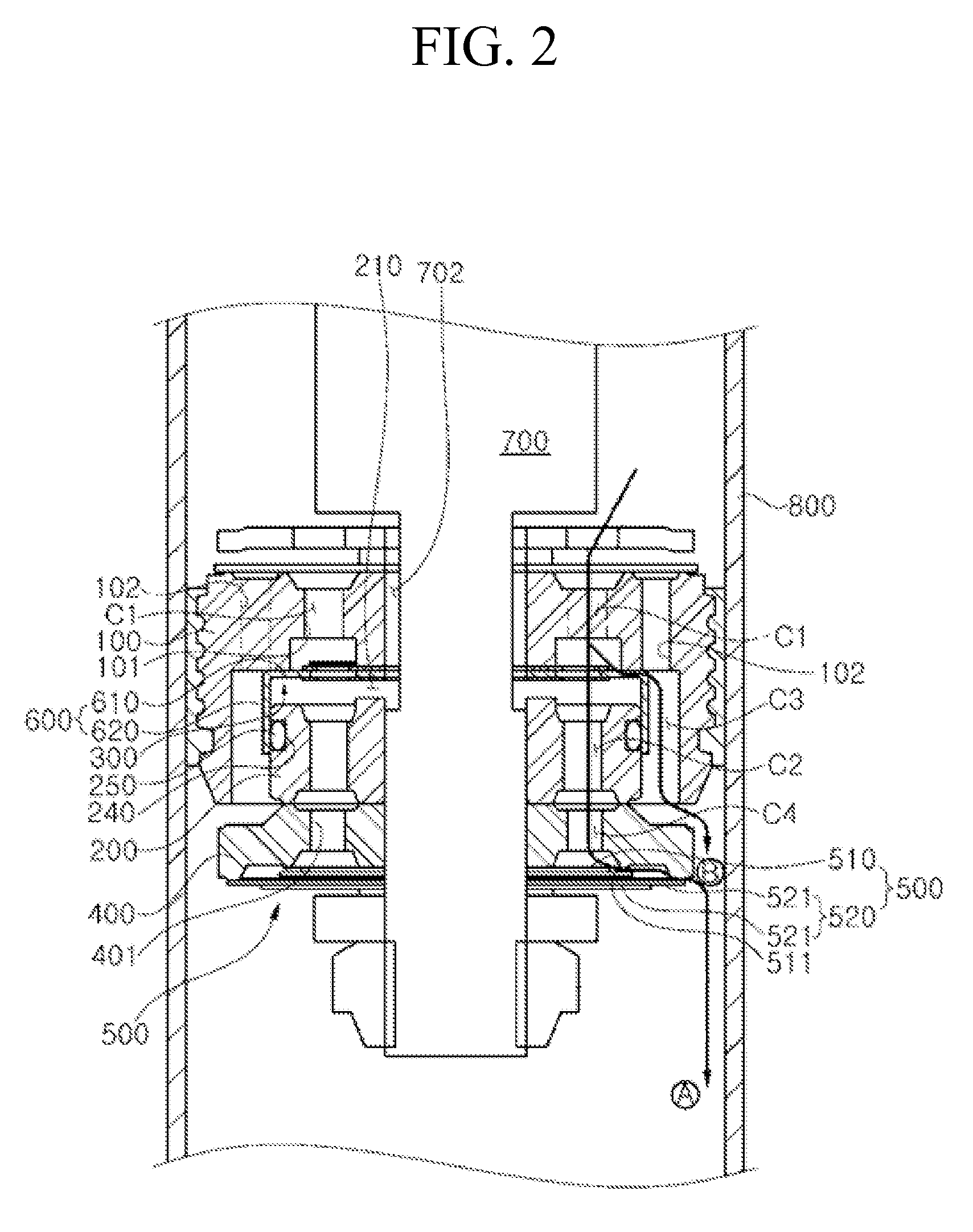Shock absorber
a shock absorber and shock absorber technology, applied in the direction of shock absorbers, vibration dampers, springs/dampers, etc., can solve the problems of inability to variably control the damping force generated in high-frequency mode and low-frequency mode, and the conventional shock absorber has a limitation in improving ride comfort, so as to ensure steering stability
- Summary
- Abstract
- Description
- Claims
- Application Information
AI Technical Summary
Benefits of technology
Problems solved by technology
Method used
Image
Examples
Embodiment Construction
[0020]Hereinafter, a shock absorber according to a preferred embodiment of the present invention will be described with reference to the accompanying drawings.
[0021]FIG. 1 is a cross-sectional conceptual diagram illustrating an overall configuration of a shock absorber according to an embodiment of the present invention, FIG. 2 is a cross-sectional conceptual diagram illustrating a flow of a working fluid in a high-frequency mode (a small-amplitude mode) during a rebound stroke in the shock absorber according to the embodiment of the present invention, and FIG. 3 is a cross-sectional conceptual diagram illustrating a flow of a working fluid in a low-frequency mode (a large-amplitude mode) during a rebound stroke in the shock absorber according to the embodiment of the present invention.
[0022]Referring to FIGS. 1 to 3, the shock absorber according to the preferred embodiment of the present invention includes a piston rod 700, a first piston 100, a pilot valve 300, a second piston (lo...
PUM
 Login to View More
Login to View More Abstract
Description
Claims
Application Information
 Login to View More
Login to View More - R&D
- Intellectual Property
- Life Sciences
- Materials
- Tech Scout
- Unparalleled Data Quality
- Higher Quality Content
- 60% Fewer Hallucinations
Browse by: Latest US Patents, China's latest patents, Technical Efficacy Thesaurus, Application Domain, Technology Topic, Popular Technical Reports.
© 2025 PatSnap. All rights reserved.Legal|Privacy policy|Modern Slavery Act Transparency Statement|Sitemap|About US| Contact US: help@patsnap.com



